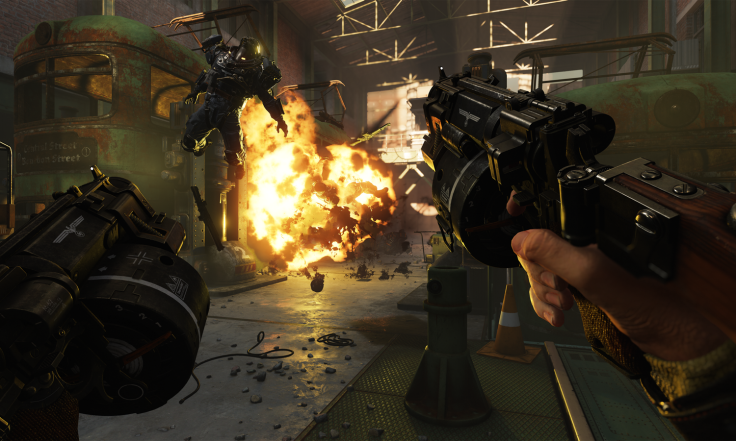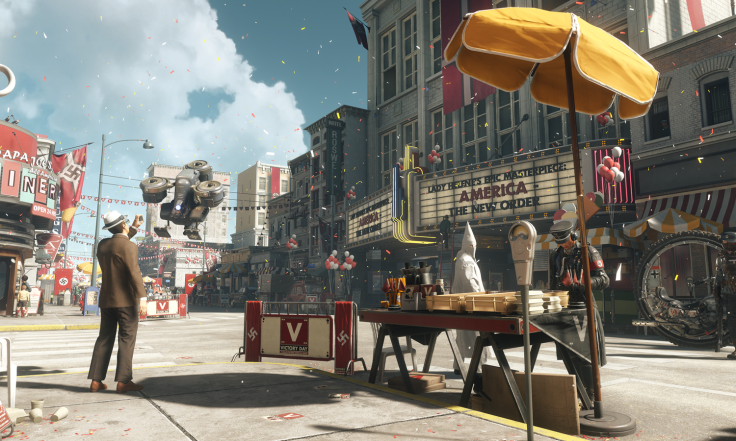Wolfenstein 2: The New Colossus review – Brilliant writing masks a shooter that never excels
B.J. Blazkowicz's Nazi-killing days are far from over.
B.J. Blazkowicz was just a head once. A head in a box that glanced from left to right and got a bloody nose to reflect the player's dwindling health. Twenty five years later and he's an anxious father-to-be, accepting his presumed death as years of fighting takes its toll.
Of all MachineGames has accomplished with its reinvention of the pioneering first-person shooter series, the recasting of Blazkowicz as a sympathetic hero is perhaps the Swedish developer's most impressive feat.
Wolfenstein 2: The New Colossus opens in style with B.J. floating in and out of consciousness following the end of 2014's The New Order.
The player sees his rescue, cut together with a shocking flashback sequence delving into the protagonist's troubled childhood.
Having defeated General Deathshead, Blazkowicz and the Kreisau Circle resistance are heading to the United States to free it from the ruling Nazi regime and spark a worldwide revolution. It's a simple good versus evil story.
There's no complexity in the idea that Nazis should be fought and defeated wherever they may spring up (despite what some may tell you) so to enrich the game's narrative, MachineGames tackles weighty, often taboo subjects head-on.
Domestic abuse is depicted in that opening scene, a character grows addicted to LSD to deal with post-traumatic stress and we learn of Americans who gladly submit to Nazi rule, blurring a line between 'us' and 'them' that most games would clearly define.
These are the subject of standout scenes that serve a wonderful cast of characters brought to life by top voice work and great writing. The relationships between the Kreisau Circle's diverse band of misfits enrich the broader story, and the villainous Frau Engel is twisted and despicable – even for a Nazi.
There's plot, and then there's play. It's the marriage of the two that can make good games classics, and in this regard Wolfenstein 2 struggles like its predecessor.
In the opening level, players must roll through a German U-boat in a wheelchair. The slower movement and sense of momentum are recreated well, and the relative confines comes in stark contrast to the bombastic best of the previous game.
Doing this was a decision undertaken to emphasise B.J.'s weakened state, and it works brilliantly while also presenting something interesting and new for a shooter. It's an example of the game bringing together its gameplay and story well.

The nuts and bolts first-person shooter play is fun, with an arsenal of great weaponry that feels satisfyingly powerful, but the game's difficulty and an archaic health system can be problematic.
Most shooters nowadays opt for regenerative health, but in a throwback to the original games, health and armour are represented as numbers at the bottom of the screen. Both can be replenished with health and armour packs, and exceeded for a limited time.
Early on, B.J. is limited to 50 health points to reflect the extent of damage to his body, making things tougher for players. This is a decision justified by MachineGames's storytelling intentions, but becomes a problem thanks to other factors.
Foremost is a lack of feedback when players are being shot. There's a light controller rumble which is often lost in the rumble of your own gunfire, and a slight red blurring along the screen edge when being shot from the side. Neither is satisfactory, meaning the best way to know if you're taking damage is to look at the two numbers at the bottom of the screen falling, and that distracts from the action.
When the game is at its most challenging that distraction becomes an issue, and Wolfenstein 2 can be a very challenging game. It has seven difficulty modes, the toughest of which make for a game that revels in over-the-top comic book violence but requires players to be conservative and cautious at all times.
It's a problem that the easiest difficulty settings feel the most in-line with how the game "should" play, and that players are also mocked (albeit gently) for choosing them, with names like "Can I play, Daddy?" and "Don't hurt me" that hark back to the original Wolfenstein 3D.
The New Colossus also suffers from fairly pedestrian level design.
An early mission in a bombed-out New York could have been memorable, but ends up looking like a township in Fallout that players pay little attention to. Other missions tease fun environments - such as a sunny desert town hosting a Nazi military parade - but quickly default to the same grey, concrete corridors and warehouses coloured only with red Nazi flags and red Nazi blood.

MachineGames proves in the game's more serious moments that it is adept at handling complex characters and difficult subjects. However, in the game's first half especially, plot and play come together uncomfortably.
B.J's dour inner-monologue and a health system that's both hindered for plot reasons and archaic for nostalgia's sake, sacrifice enjoyment for storytelling intent in a way that doesn't need to be dragged out for as long as it is.
New Colossus has a very clear halfway point, after which many of the game's problems begin to fade. The level design is still lacking, but Blazkowicz's health returning to normal and his morbid soliloquies taking a back seat make for a much more cohesive and confident game that feels more at ease with enjoying itself.
Wolfenstein 2: The New Colossus's story is a rich tapestry of violence, wild ideas and memorable characters, but when its excellent cutscenes end, its play struggles to reach the same heights. Mowing down Nazis is always a blast, but often those moments are undercut by the encumbrance of a counter-intuitive health system. New Colossus hosts some exceptional storytelling and unforgettable moments, but underneath all that is a shooter that never really excels.






















